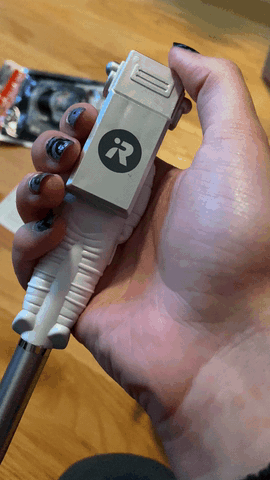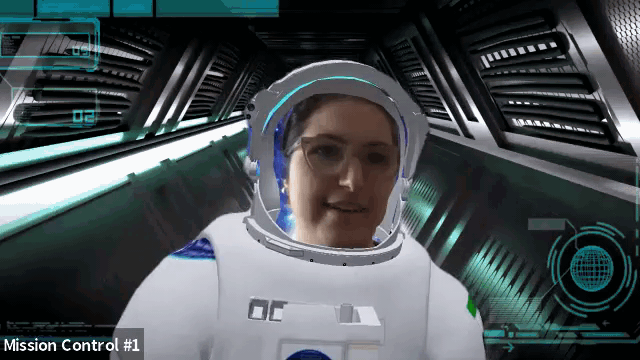Halloween has been my favorite holiday since before I had a conscious sense of what holidays were. And I’ve found that working in design and experience groups, I’m not alone in wanting to create a little magic during Halloween season. Typically the holiday at iRobot is a day-long festival of creativity and resourcefulness, but 2020 wasn’t really the environment for constructing balloon pits or simulating moon landings (our team’s contributions for 2018 and 2019, respectively).
But it seemed impossibly sad not to do something. As September caught its stride, one of my team members suggested we continue our 2019 space theme for a Zoom event…so we got to work.
Note: all art featured in these images is by Alessandra Fleck, my incredible colleague who lead the visual design for this project.

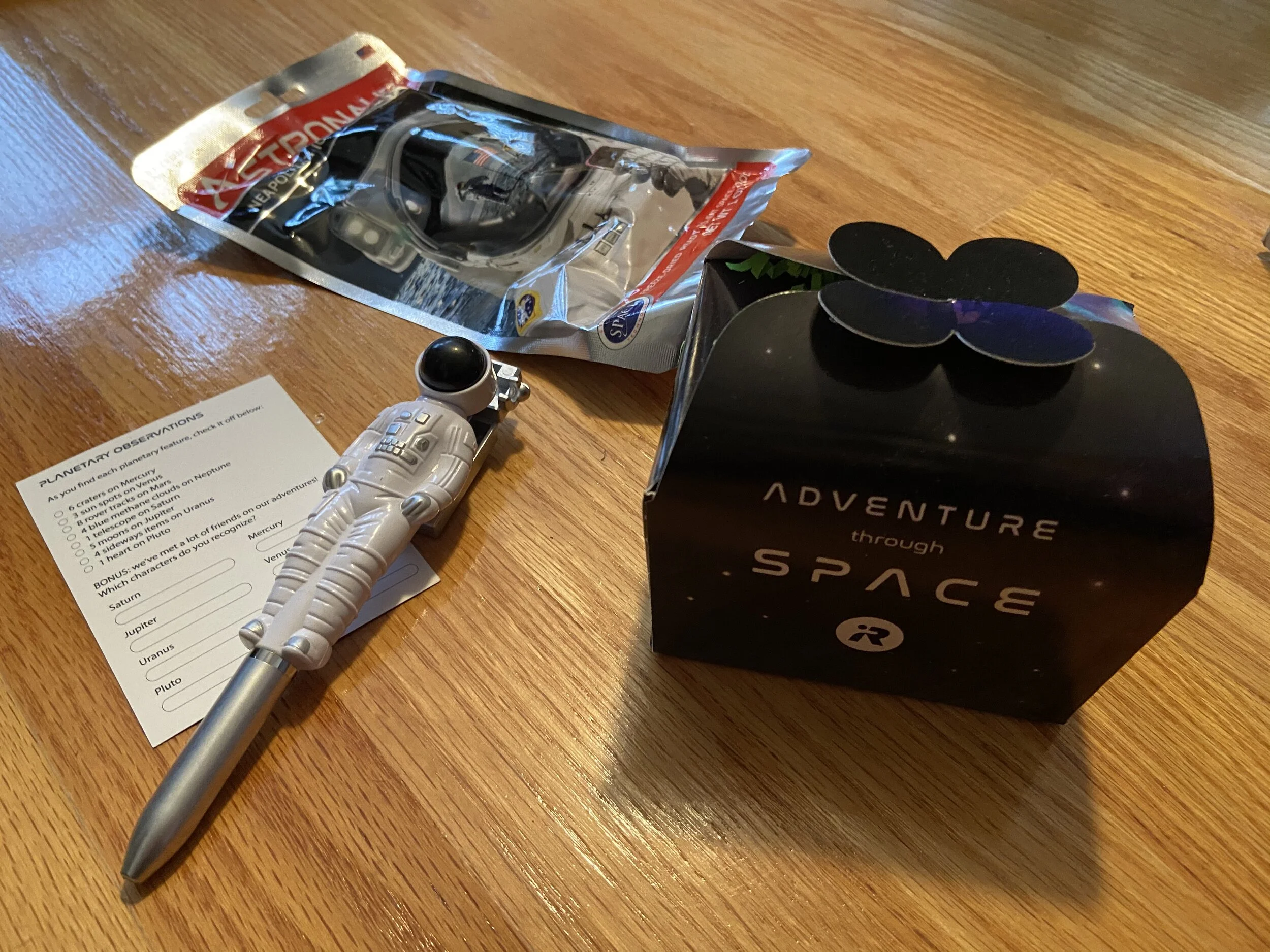
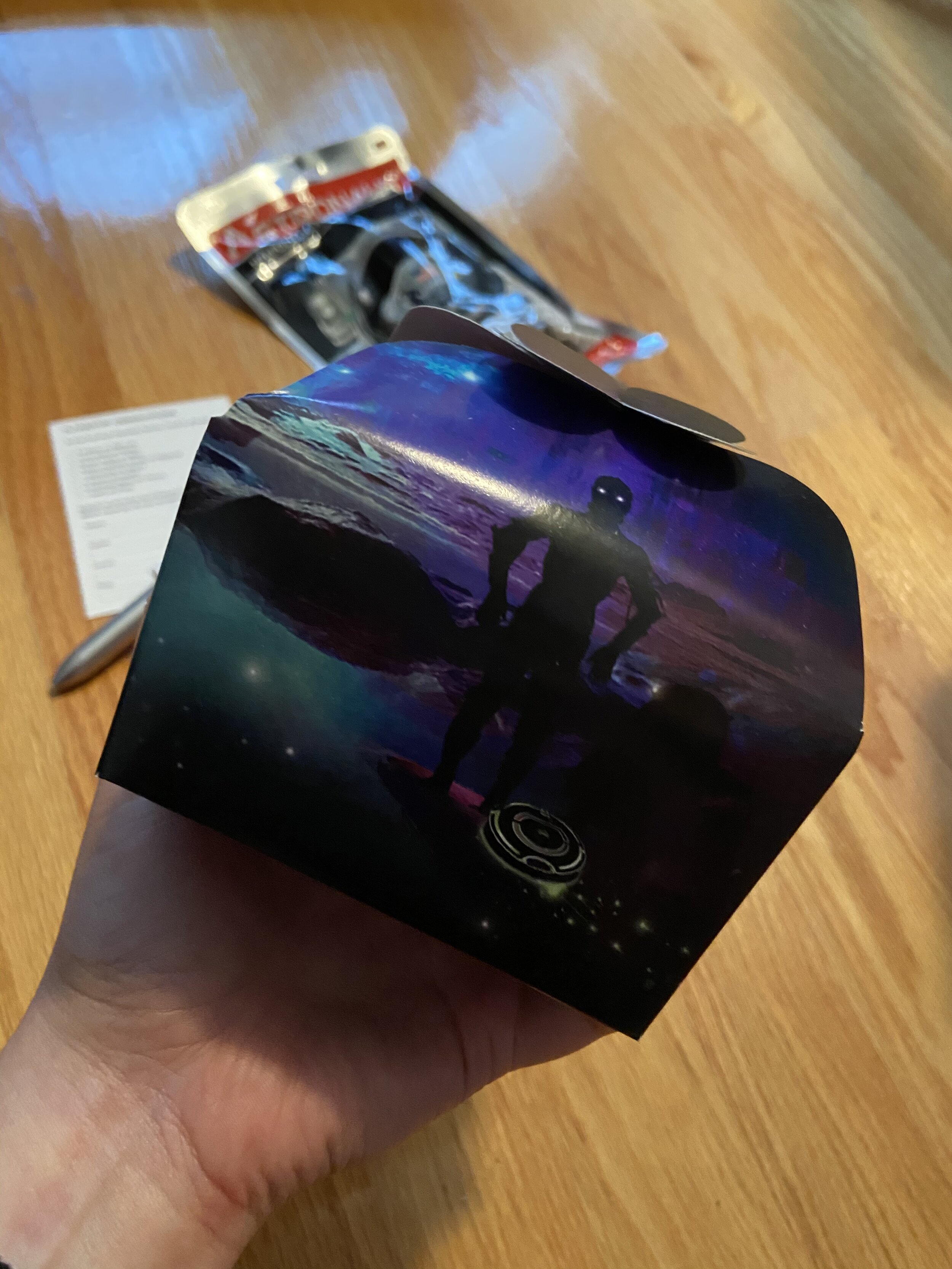
How do you make Zoom exciting?
We started with a team brainstorming session to explore 3 components: technology, activities, and physical/tactile elements. We had a lot of ideas that ranged from awesome but out of budget to cheap but complicated. What we knew is that we wanted to mail something to families so that the kids would have a tactile component to the experience, and we wanted the event to be space themed, with some sort of activity happening.
The box:
In the end, the timeline ended up shaping our physical element, since we needed something that could be created and shipped safely (meaning we couldn’t get together to assemble and pack boxes) and quickly (we only had 3 weeks). We ended up with a treat box filled with fun-sized candy and a chocolate spacecraft, an astronaut pen, and an astronaut ice cream sandwich.
On top of the treats was a “letter” I wrote asking for help getting home from space, where we needed to catalog our planetary observations and find our missing rover.
The event:
My contributions focused on the experience of the event itself. I knew we needed activities that tied into something physical that would be in the box my co-lead was organizing, and that we needed ways for kids of all ages to engage. I settled on two primary activities: 1) a search game where attendees would try to find items in the Zoom backgrounds that represented each planet, and 2) a puzzle quest where attendees would need to collect and decipher clues on each planet to determine the location of our rover. The first activity was meant for younger kids and the second for older kids and adults.
On the back of the “letter” was a list of items to locate on each planet, so attendees could have a physical reference and check off each challenge as they went.
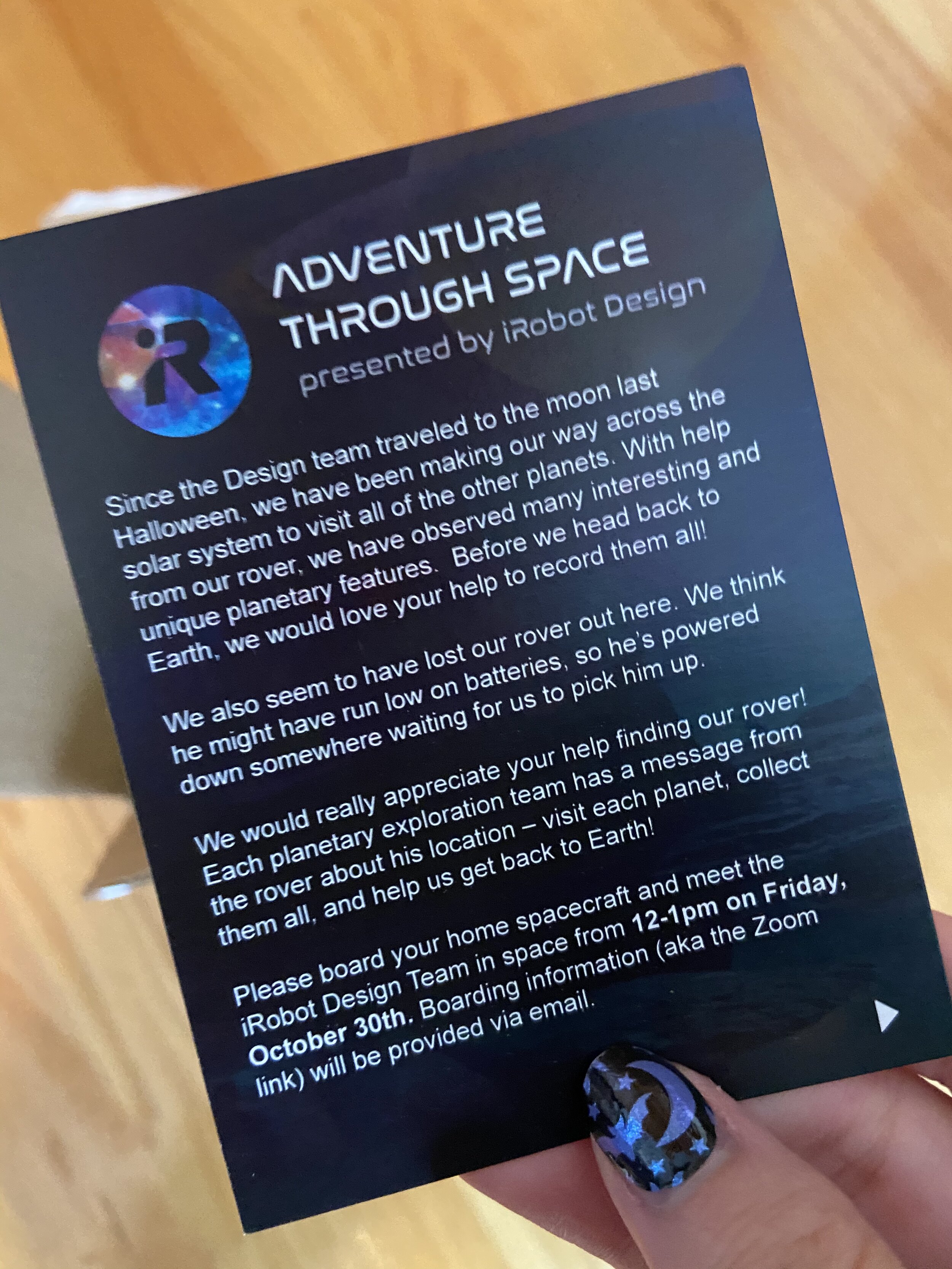
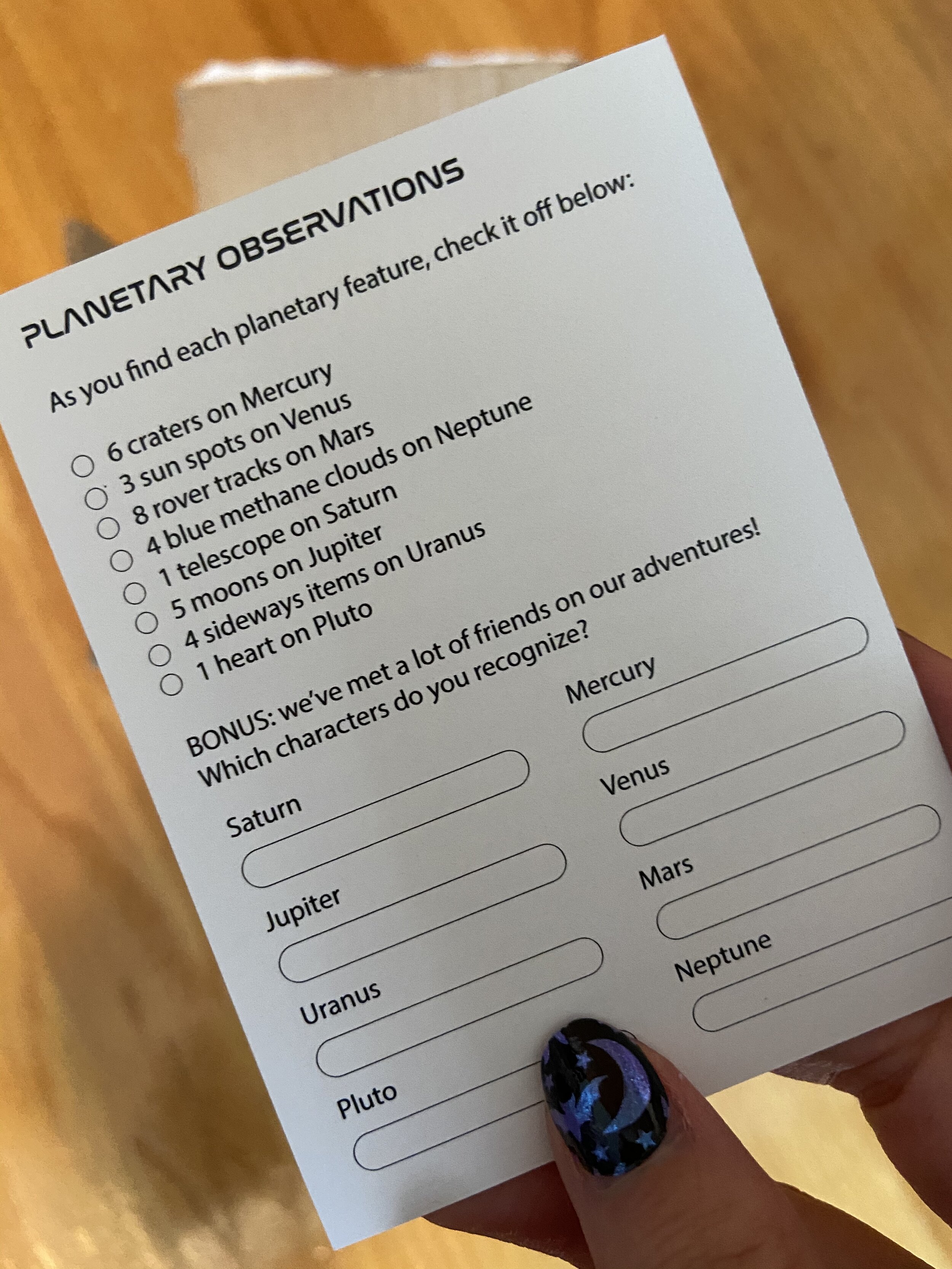
After I shared my proposal with Team Halloween 2020, we got to work creating all the needed materials: the card, the treat box exterior, the Zoom invitation, 8 backgrounds (1 for each planet) with hidden items, a soundtrack, virtual space suits, and the clues for the rover hunt.
I’m so grateful to be part of such a talented and creative group. Starting with nothing but the list of hidden items I had drafted, the designers made each planet’s fantastical world their own, and based on their artistic vision we ended up adding a third activity with sci-fi character silhouettes on each planet that attendees could identify and write in on their activity card.
Someone composed a short piece of environmental sound to play in Mission Control, while the planets got mixes of space-themed instrumental tracks. Another designer taught us all how to install Snapchat Lens so we would appear wearing space suits on Zoom.
While the visuals came together, I worked on the clues for the rover hunt. I researched possible landmarks and settled on Enceladus, the most reflective surface in the solar system and one of Saturn’s moons, as the rover’s location. Then I wrote 8 clues that helped attendees identify the location. I created a mix of difficulties and types of challenge - some required knowledge (or Googling) about space, while others were word searches or coded phrases. Since our department lead had asked that we make the event a little educational, I wrote up facts associated with each hidden item and rover clue.
I shared those facts and short scripts for introducing clues and giving hints with the rest of the team prior to our “dress rehearsal”.
I also created the Zoom event itself, so that I would have controls over the virtual space and could run “mission control”. This involved some research into Zoom’s capabilities to figure out the best way to move attendees through the various activities. I ended up creating a breakout room for each planet and setting up attendee-driven movement between breakout rooms so that attendees could “planet hop” as needed. During our rehearsal I took screenshots, which I then annotated for a Zoom guide to distribute prior to the event. Not everyone read it, but it was a big help to keep things running smoothly - troubleshooting for 300 attendees live would have been impossible!
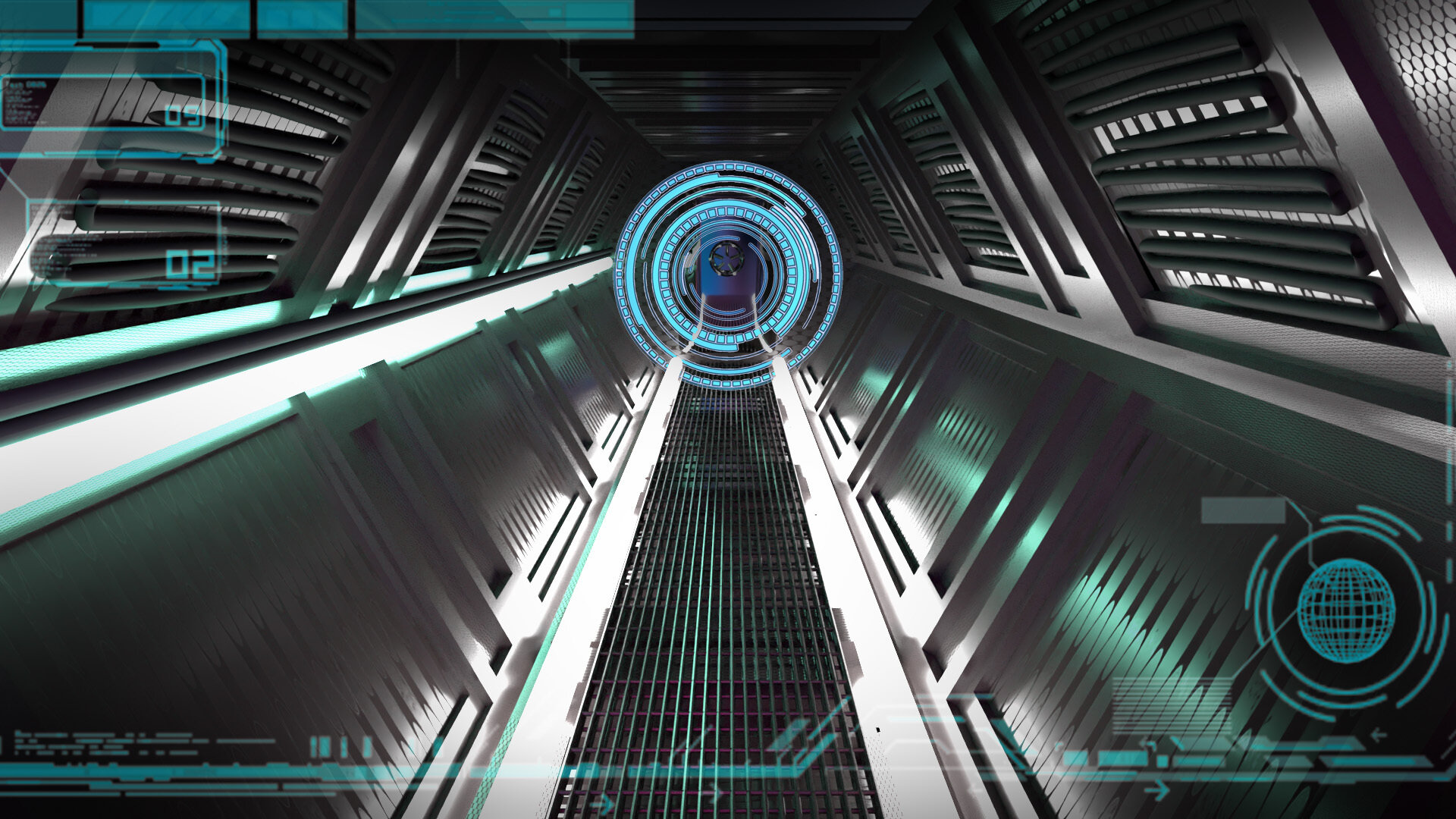
We made it an adventure.
When attendees joined the Zoom meeting using the provided link, they entered Mission Control where I was waiting for them. I asked them to conduct their “pre-launch checks” which was a thematic way of ensuring their window was configured the way we wanted. I engaged with the kids (and my colleagues), and set the scene by explaining our “missions”. Then I explained how to navigate the 8 breakout rooms (each bearing the name of a planet) and sent them off on their way. Attendees were free to spend the hour of the event going from planet to planet, interacting at whatever level they were comfortable with: doing activities, talking to each planet’s team, and hunting for the rover. Some people stayed for 15 minutes, others for 60.
The response was overwhelmingly positive. Despite being at home, it felt like going on a quest, visiting new places, and doing something a little exciting. I’m glad we were able to make a little magic in the virtual world - for me, that’s what design is all about.

Halloween 2019
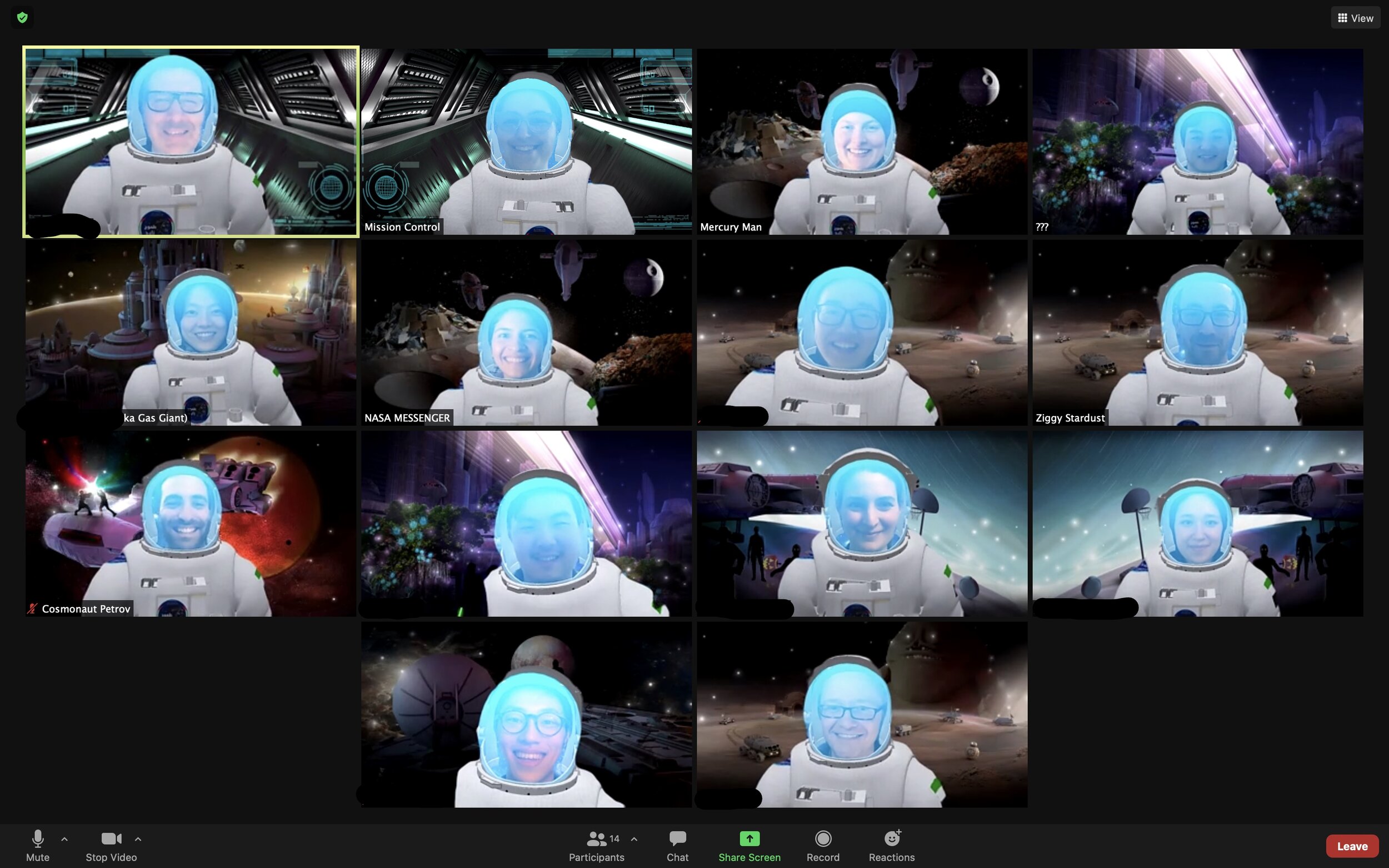
Halloween 2020
